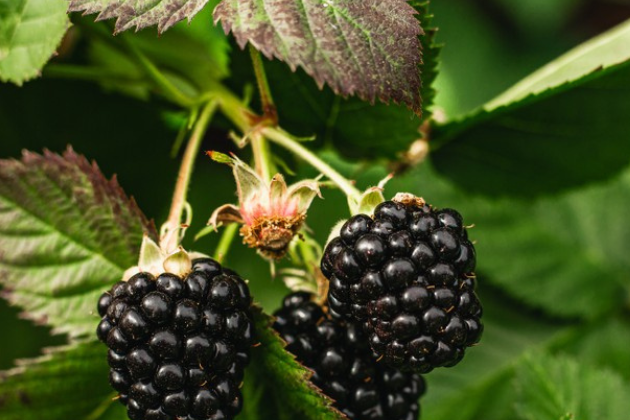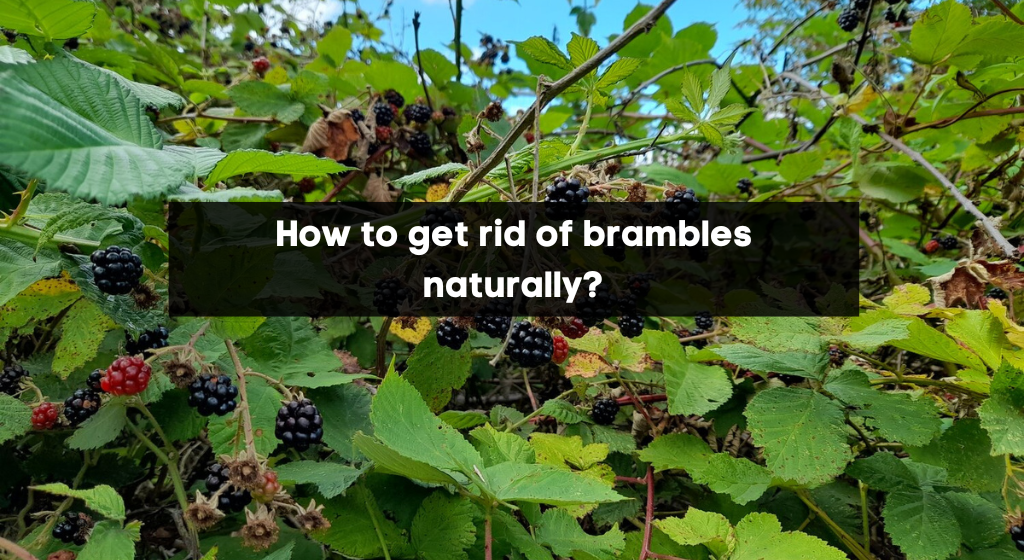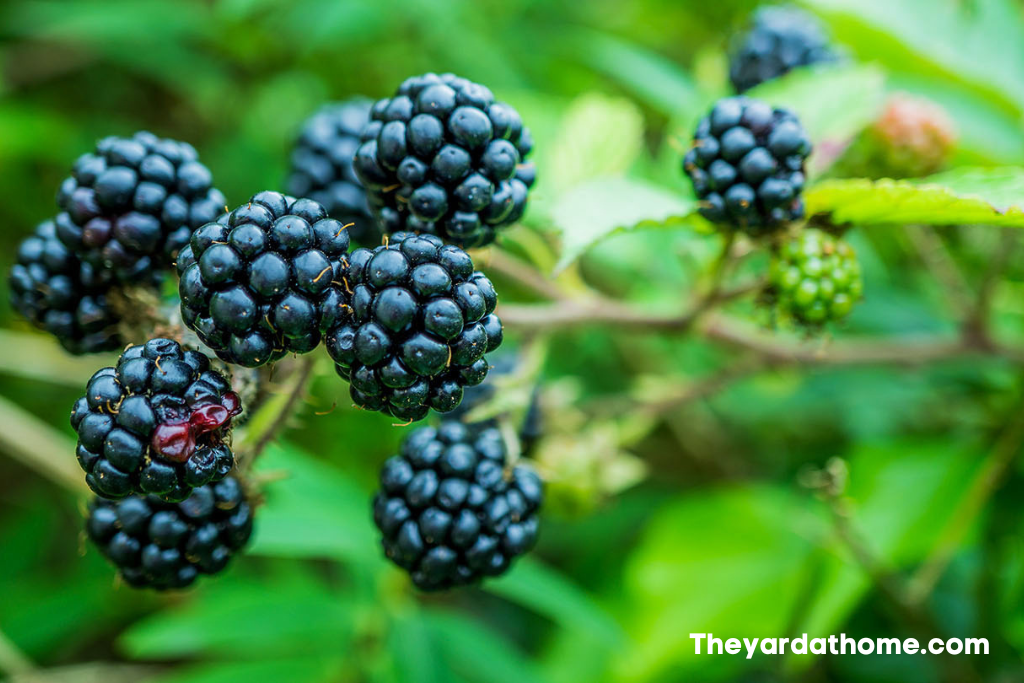Brambles can be a beautiful addition to a garden or landscape, but they can quickly become a nightmare when uncontrolled.
These prickly plants are known for being invasive and can easily take over your yard if not appropriately managed.
While chemical treatments are commonly used to get rid of brambles, many people prefer a more natural approach.
If you’re looking for an eco-friendly solution to tackle brambles, you’re in the right place!
In this guide, we’ll explore some of the most effective ways to get rid of brambles naturally and enjoy a bramble-free garden in no time. So, grab your gloves, and let’s get to work!
How do Brambles spread?
Brambles, or blackberry bushes, can spread quickly and take over your garden or yard.
They spread differently, including through their roots, fruit, and canes.
The roots can grow long and produce new shoots that turn into plants, and animals can spread the seeds through their droppings.
The canes can also produce new shoots and spread horizontally. To keep brambles under control, it’s essential to understand how they spread and use proper management techniques.
Why do brambles grow so fast?
Brambles, also known as blackberry bushes, increase due to their strong roots that can absorb water and nutrients quickly.
They also have a unique reproductive strategy allowing them to produce many offspring through flowers and roots.
This helps them spread and take over areas quickly, outcompeting other plants.
A robust root system and fast reproduction make brambles challenging to control in gardens and landscapes.
Problems Associated with Brambles on Your Property
Here are some problems associated with brambles on your property:
- Brambles can take over your yard and outcompete other plants.
- They can be difficult and painful to control due to their thorns.
- Brambles can create a breeding ground for pests and be a safety hazard.
- They can damage property infrastructure such as fences and buildings.
- Brambles reduce the aesthetic appeal of your property.
Natural Methods to Eliminate Brambles
Brambles, or blackberry bushes, can be a persistent and challenging problem to eliminate on your property.
While chemical treatments are available, many people prefer natural methods to eliminate brambles because they are safer for the environment and people.
Here are some of the natural methods to eliminate brambles in detail:
Hand-Pulling:
This method involves manually pulling out the brambles from the roots. While it can be effective, it is also labor-intensive and challenging if the brambles are deeply rooted.
Wear protective gloves when hand-pulling as the thorns can be painful.
Mowing and Cutting: Regular mowing or cutting of brambles can help control their growth. Use a brush cutter or lawnmower to cut the brambles down to the ground, and repeat this process every few weeks until the brambles die.
This method is particularly effective when used with other natural methods, such as smothering.
Smothering:
Cover the brambles with heavy-duty tarps, cardboard, or black plastic. This method deprives the brambles of sunlight and air, causing them to die.
It can take up to a year for this method to be effective, and regularly checking the covered area for new growth is essential.
Vinegar and Salt:
Create a vinegar and salt solution and spray it directly onto the brambles. The acid in the vinegar can kill the brambles, while the salt can dry out the plant.
However, this method can also harm other plants in the vicinity, so use caution when applying this solution.
Boiling Water:
Pour boiling water onto the base of the bramble plant. This method can damage the root system and kill the plant.
However, it can also harm other plants in the area and is not recommended for large patches of brambles.
Digging:
This method involves digging out the bramble roots from the soil. It is a labor-intensive method, but it can be effective, especially for small patches of brambles.
It’s important to note that natural methods to eliminate brambles may take longer than chemical treatments. Still, they are safer for the environment and people.
Additionally, natural methods are often less expensive and can only be done with professional help.
Be patient and persistent in your efforts to eliminate brambles and combine several of these methods to achieve the best results.

What is the best weed killer for brambles?
Finding the right weed killer is crucial when it comes to eliminating brambles.
Many weed killers are available on the market, but not all are effective against brambles.
Here are some of the best weed killers for brambles:
Glyphosate:
Glyphosate is a systemic herbicide that kills the brambles’ roots. It is a popular choice for controlling brambles and is effective even on mature plants.
It is important to note that glyphosate is a non-selective herbicide, which means it will kill any plant it comes in contact with. So, be careful when applying it around other plants.
Triclopyr:
Triclopyr is a selective herbicide that targets woody plants, making it an excellent choice for eliminating brambles.
It works by being absorbed by the leaves and transported to the roots, killing the plant. Triclopyr is safer for other plants than glyphosate, but it can still harm some plants.
Dicamba:
Dicamba is a selective herbicide that targets broadleaf weeds and brush, including brambles.
It is most effective when applied to young, actively growing plants. Dicamba should be used cautiously around other plants as it can damage or kill them.
2,4-D:
2,4-D is a selective herbicide that targets broadleaf weeds, including brambles. It is most effective when used on young, actively growing plants.
Like dicamba, 2,4-D should be used with caution around other plants.
Organic Herbicides:
If you prefer a more eco-friendly approach, several organic herbicides can be effective against brambles.
These include vinegar, salt, and citrus oil. However, these organic herbicides are often less effective than synthetic ones and may need to be applied more frequently.
FAQ
Q: Why is it essential to get rid of brambles?
A: Brambles can quickly become invasive and take over an area, making it difficult for other plants to grow.
They can also be a safety hazard due to their thorns, making it difficult to walk through or work in an area where they are present.
Q: What are some natural methods to eliminate brambles?
A: Natural methods to eliminate brambles include cutting them back regularly, covering them with tarps to block out sunlight, smothering them with mulch or newspaper, and using vinegar or salt to kill the roots.
Q: Can I use fire to get rid of brambles?
A: Using fire to get rid of brambles is not recommended as it can be dangerous and cause damage to the surrounding area.
Q: Will removing the top growth of brambles kill the plant?
A: Removing the top growth of brambles will not kill the plant but will slow down its growth and make it easier to manage.
Q: How long does it take to get rid of brambles naturally?
A: It can take several months to several years to completely get rid of brambles naturally, depending on the area’s size and the method’s effectiveness.
Q: Can I use a weed killer to get rid of brambles naturally?
A: Yes, organic weed killers can be used to get rid of brambles naturally, such as vinegar or salt.
However, chemical weed killers can harm the environment and should be used cautiously.
Conclusion
In conclusion, there are several natural methods to get rid of brambles that are effective and eco-friendly.
Using methods such as cutting back regularly, smothering with mulch, or using vinegar or salt, you can eliminate brambles and create a safer and more manageable outdoor space.
Remember to use caution when using any method and be patient, as it may take time to see results.


